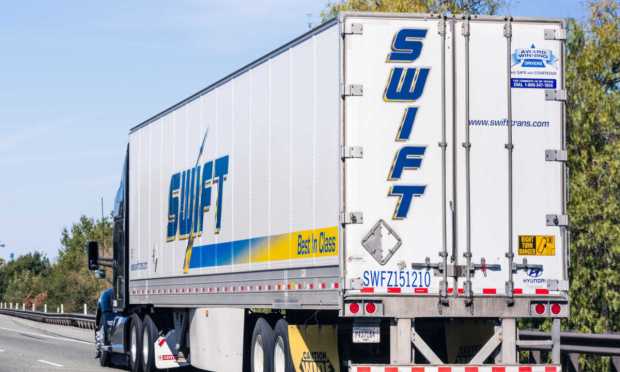Inflation Brings Worries by the Truckload as Freight Demand Slows

Demand for freight transportation is slowing as consumers cope with rising inflation, executives at Knight-Swift Transportation Holdings said Wednesday (July 20) during the company’s quarterly earnings call.
“We expect that demand may moderate as the consumer digests and deals with higher inflation and uncertainty in the economy,” Knight-Swift President and CEO David Jackson said during the call.
Inflation is boosting supply chains costs as well, the executives said. This may reduce the number of competitors in the industry but will leave opportunities for those that deploy technology and other means to boost efficiency.
“Capacity is clearly under pressure,” Jackson said. “We expect contraction in supply and are already seeing it and expect that to continue as the year proceeds as carriers deal with depressed spot rates combined with high energy fuel prices, higher maintenance and equipment costs and rising interest rates, which not only makes it difficult for those that are highly leveraged, but also disincentivizes new entrants to the market.”
Investing in Technology
At the same time, for the quarter ended June 30, each reportable segment of the diversified freight transportation company achieved double-digit revenue growth year-over-year while improving margins, leading to consolidated revenue growth of 39.7%, excluding truckload and less-than-truckload (LTL) fuel surcharge. Those segments include truckload, LTL, logistics and intermodal.
“We anticipate changes in the environment and pivot our strategies accordingly,” Knight-Swift Chief Financial Officer and Treasurer Adam Miller said during the call. “We have invested in technology that allows us to efficiently leverage our assets throughout multiple segments, including truckload, logistics and LTL.”
Improving Utilization of Tractors
The company’s truckload segment saw an 11.2% year-over-year gain in revenue and the company reported more progress in getting drivers and improving utilization of its tractors.
“Our miles per tractor continued to be negatively impacted by our intentional shift to a shorter length of haul and a higher unseated truck count year-over-year,” Miller said. “Recruiting and retaining drivers continues to be a challenge, but we are seeing improvements sequentially in our ability to recruit drivers.”
The LTL segment achieved more freight opportunities and a longer length of haul, and the company expects to continue expanding its geographic footprint.
The logistics segment earned 52.5% growth in revenue driven in part by increases in load count and revenue per load.
The intermodal segment saw revenue increase 15.2% year over year with street and rail velocity in many corridors improving after coping with longer container and chassis dwell times and inconsistent rail network speeds earlier in the quarter. While load count was down for those reasons, revenue per load was up.
“Labor challenges within the rail network appear to be softening, leading to improved notification times and more consistency for our customers,” Miller said.
Enhancing Utilization of Trailers
Looking ahead, Knight-Swift expects to see rates slide late in the third quarter and into the fourth quarter as the spot market moderates, miles per tractor to improve modestly and logistics load volumes to increase while revenue per load decreases.
The company also expects sourcing and retaining drivers to improve, but remain challenging, and inflationary pressure to continue in most cost areas, including maintenance, equipment and non-driving labor.
To deal with the challenges, the company will continue to deploy technology.
“Certainly, we have more technology to develop, but between our ability to connect our systems across brands, our enhanced visibility and utilization of trailers, and the actual insights our reporting capabilities provide our team, we are leveraging tech to successfully navigate the market, execute on our strategies and deliver on our relentless efforts to be the most productive and have the lowest operating cost in the industry,” Miller said.
